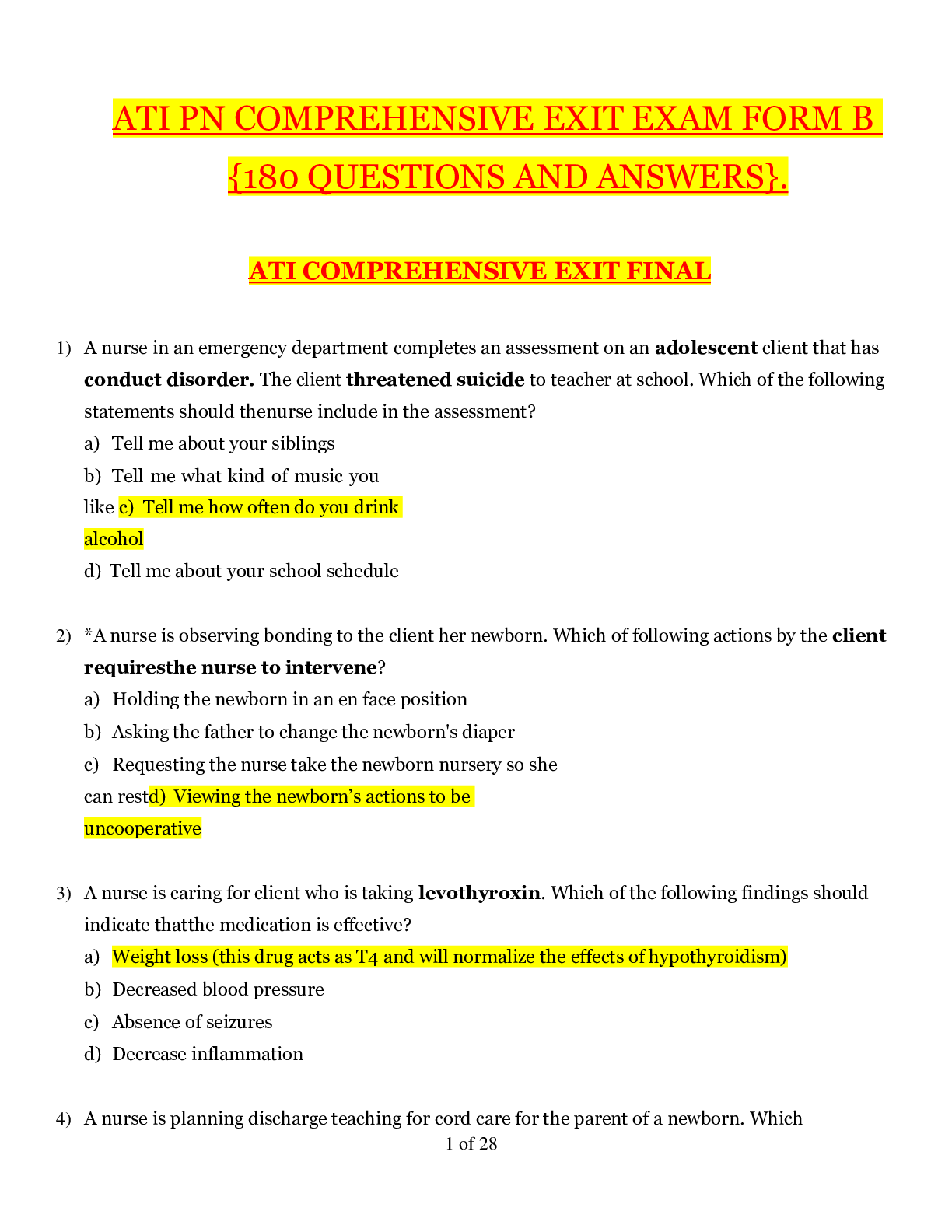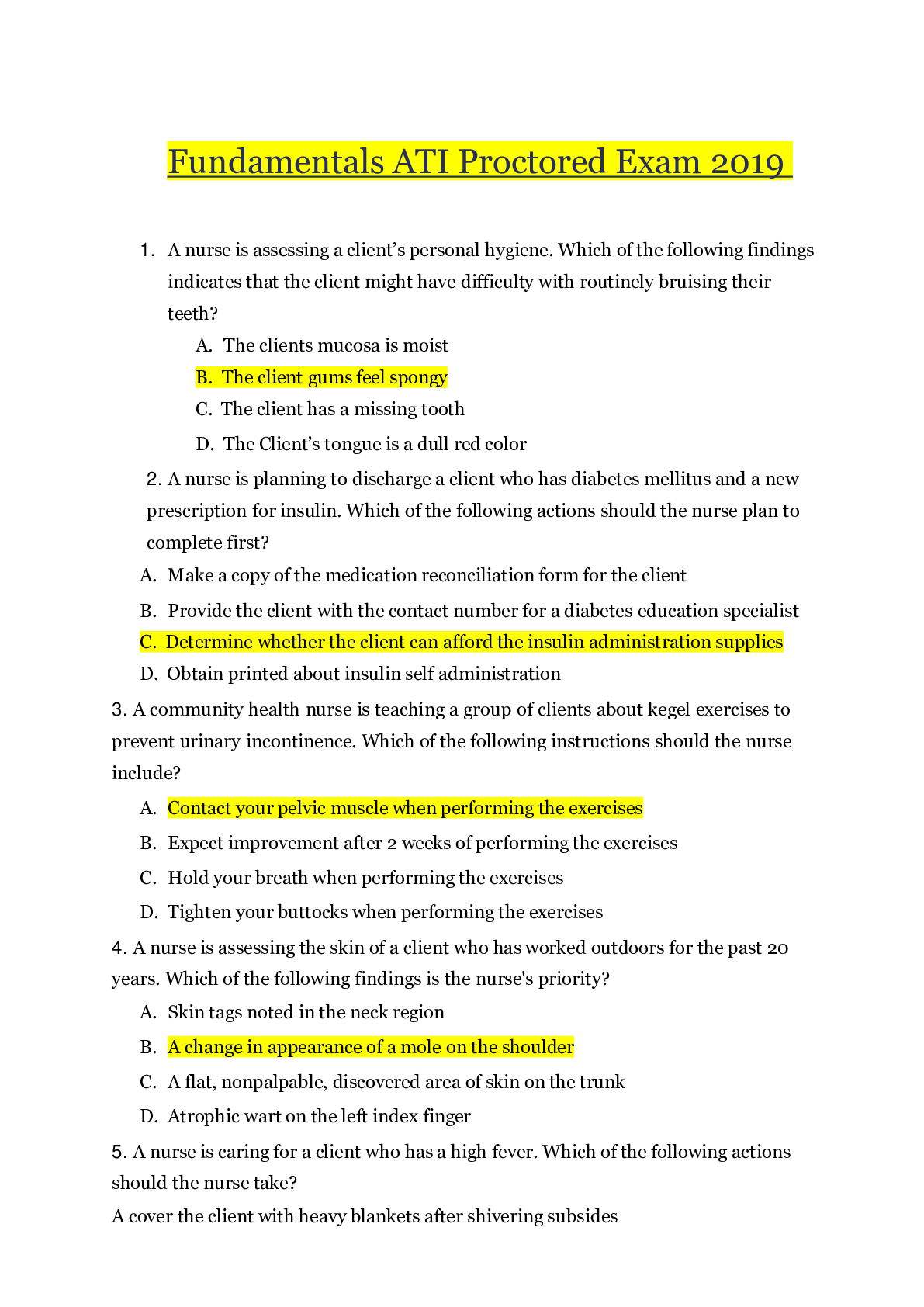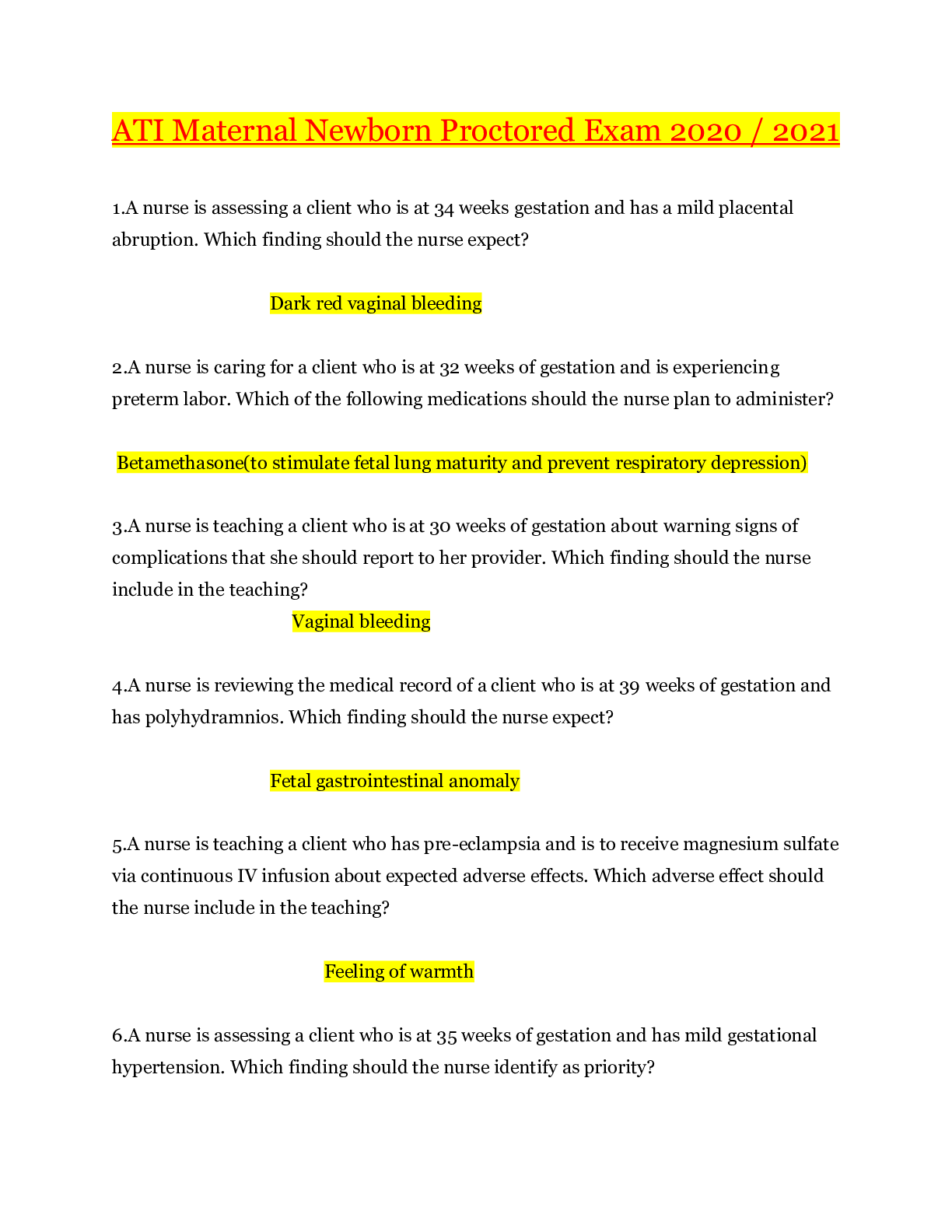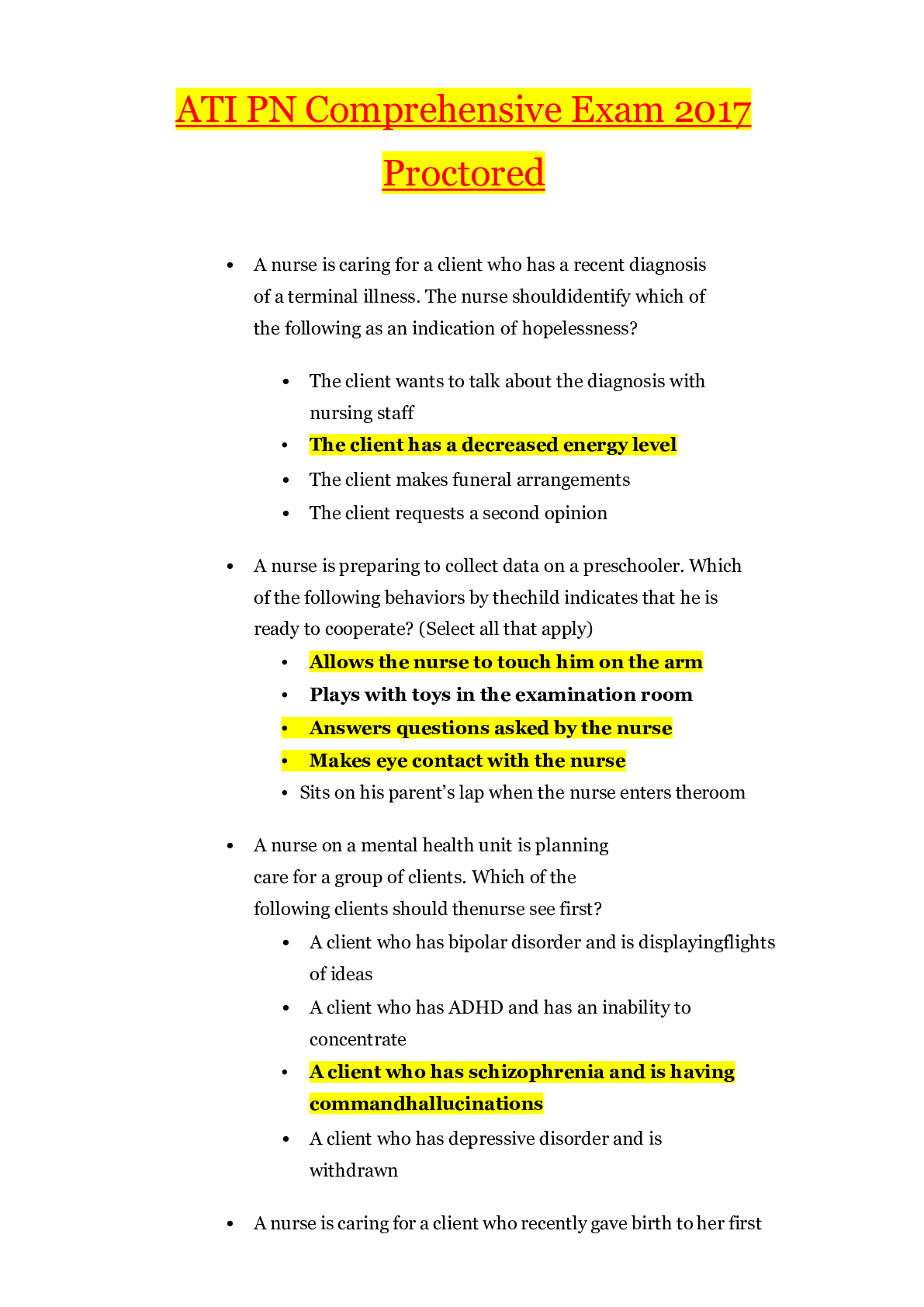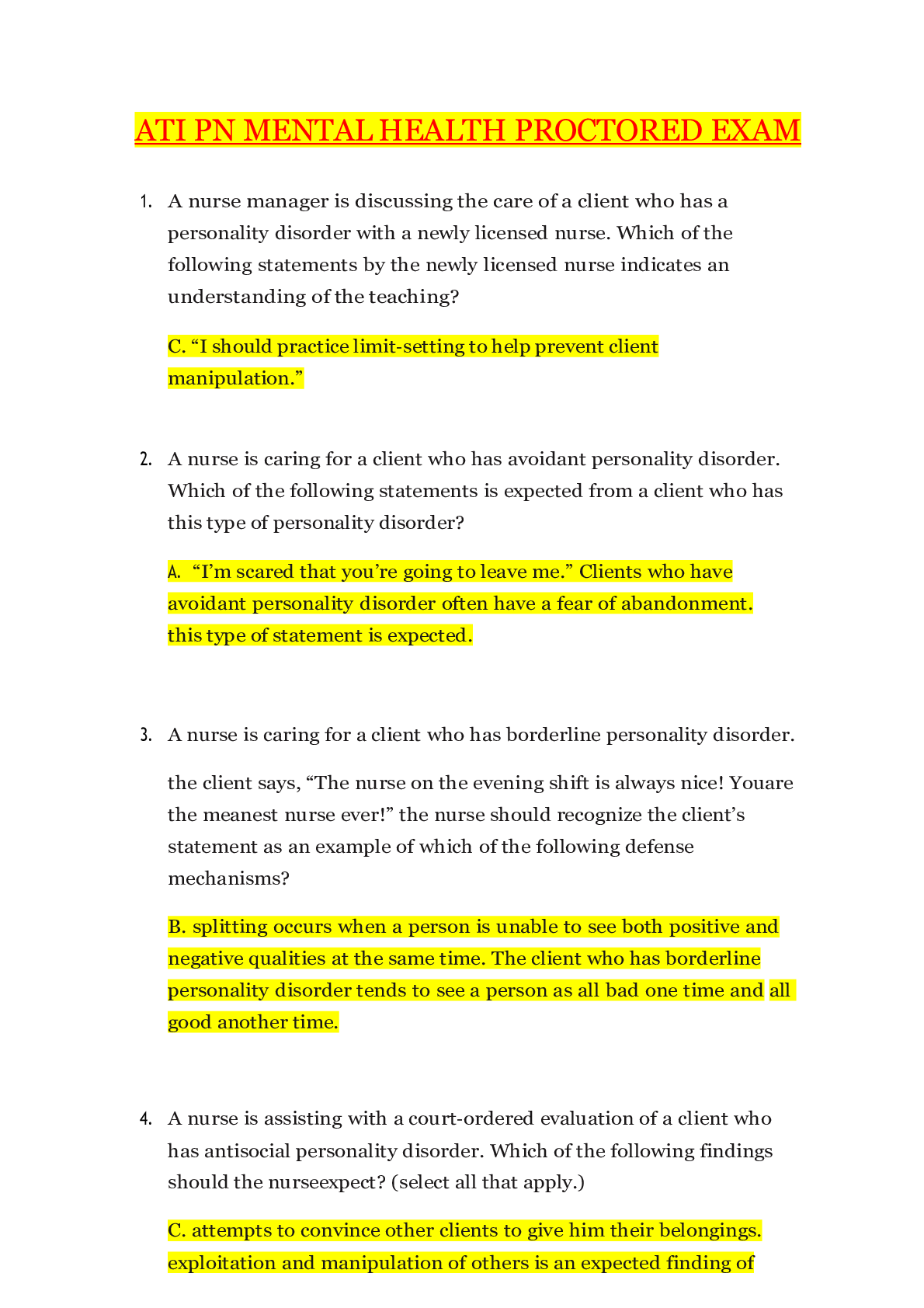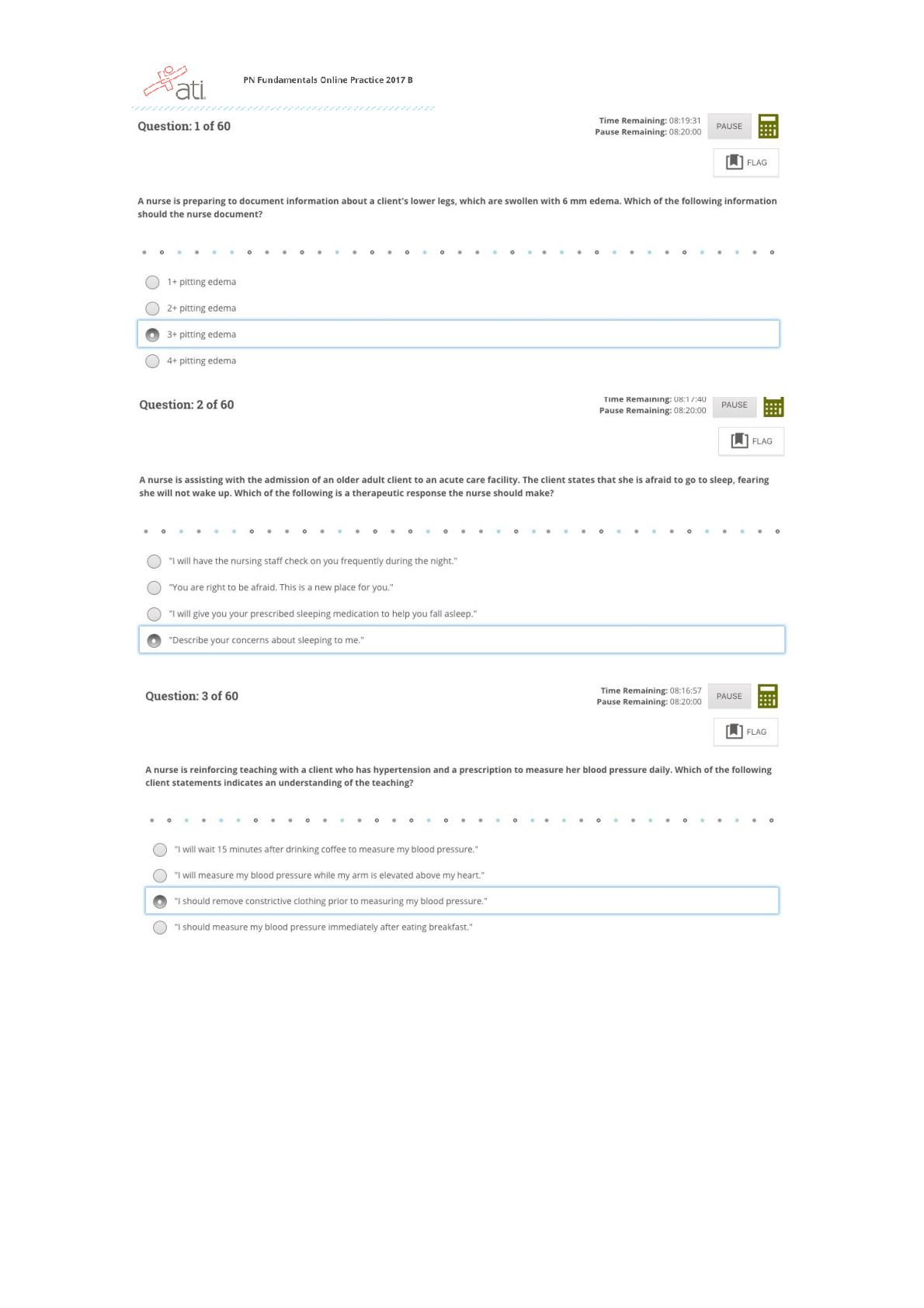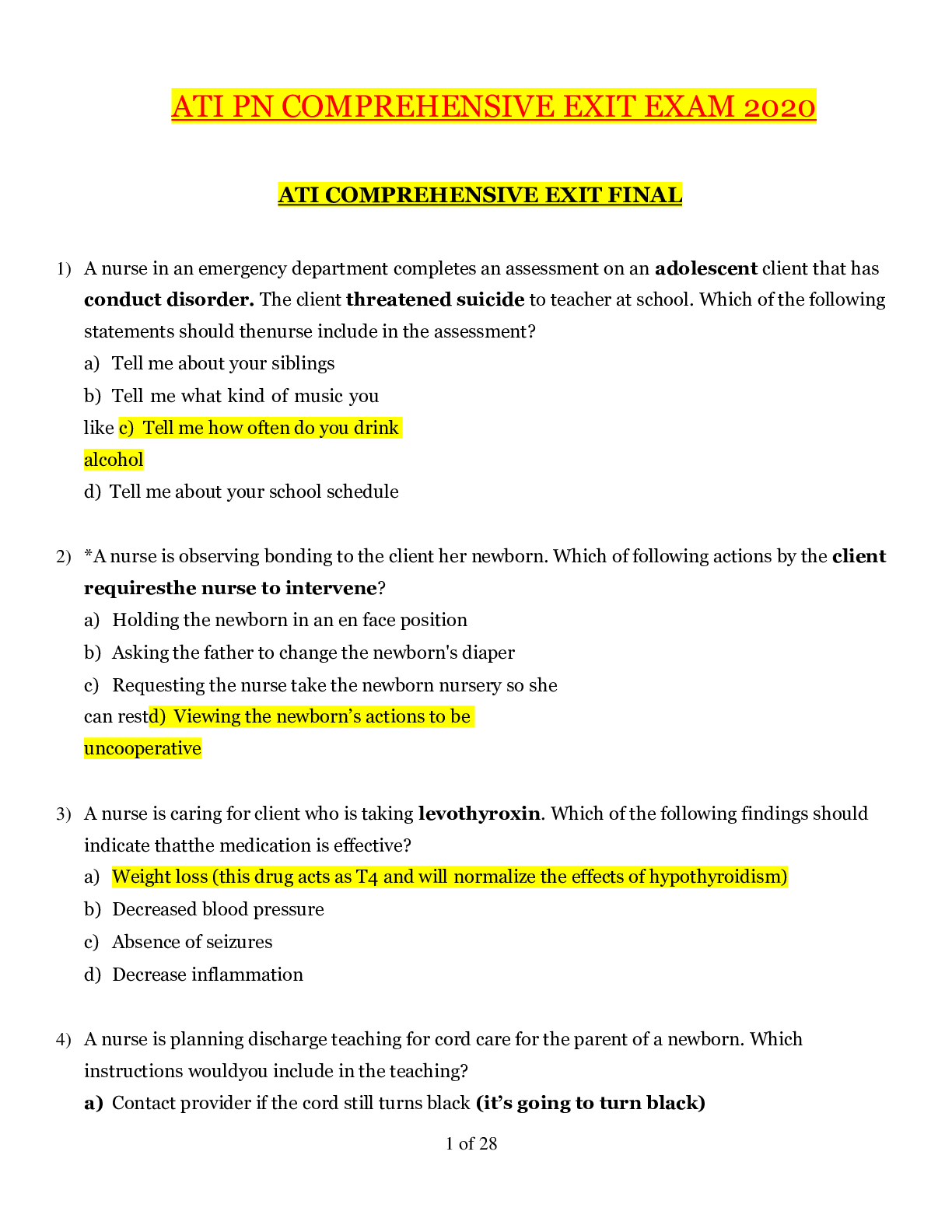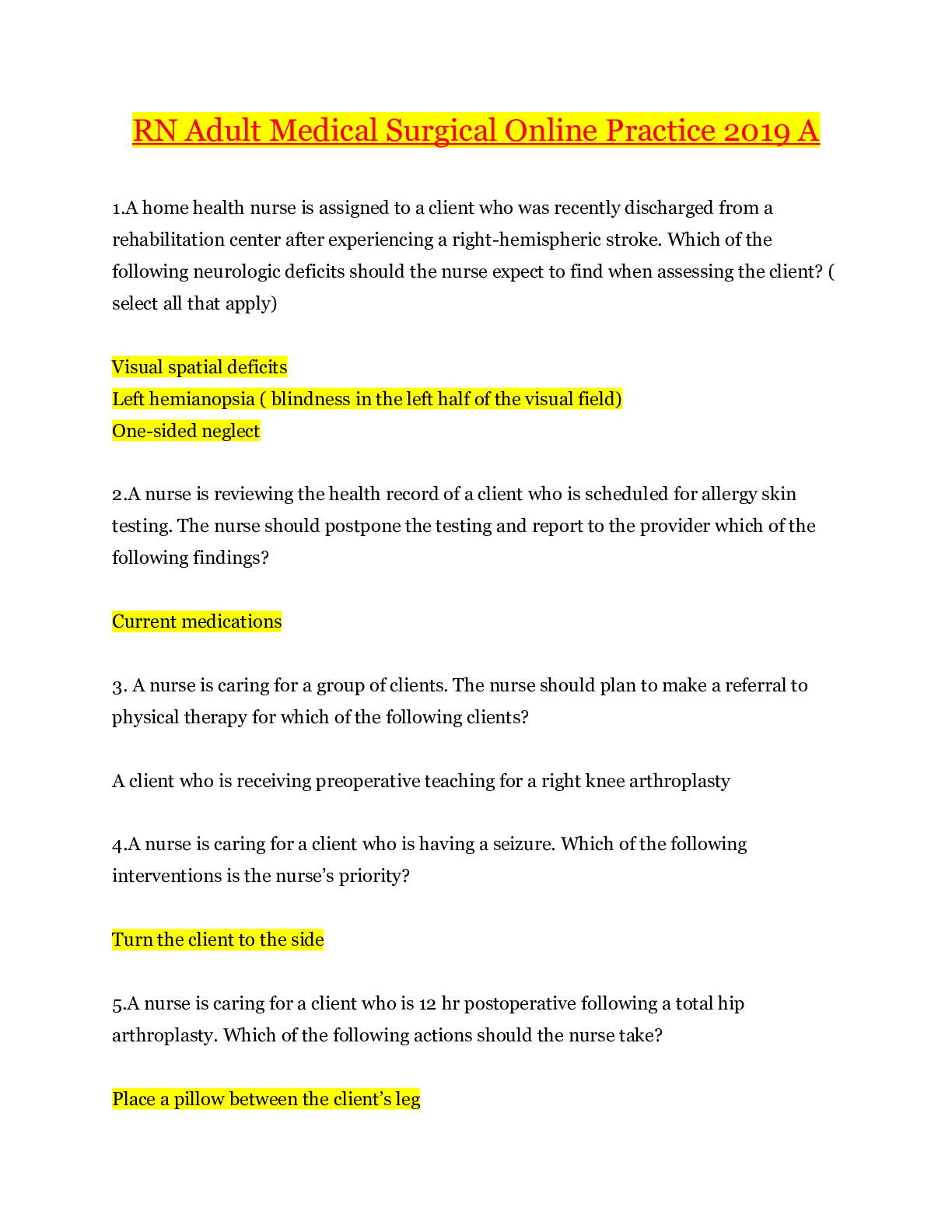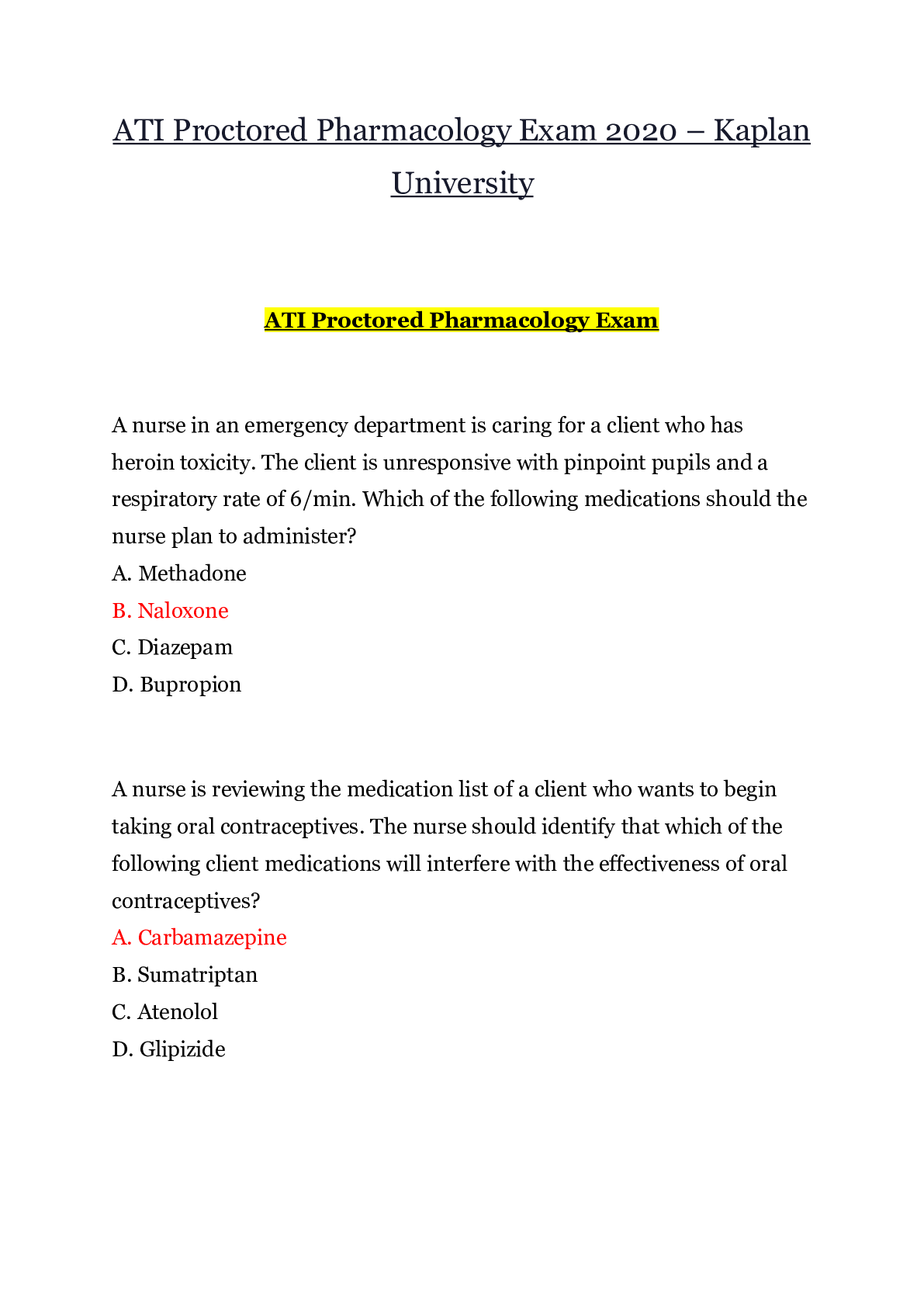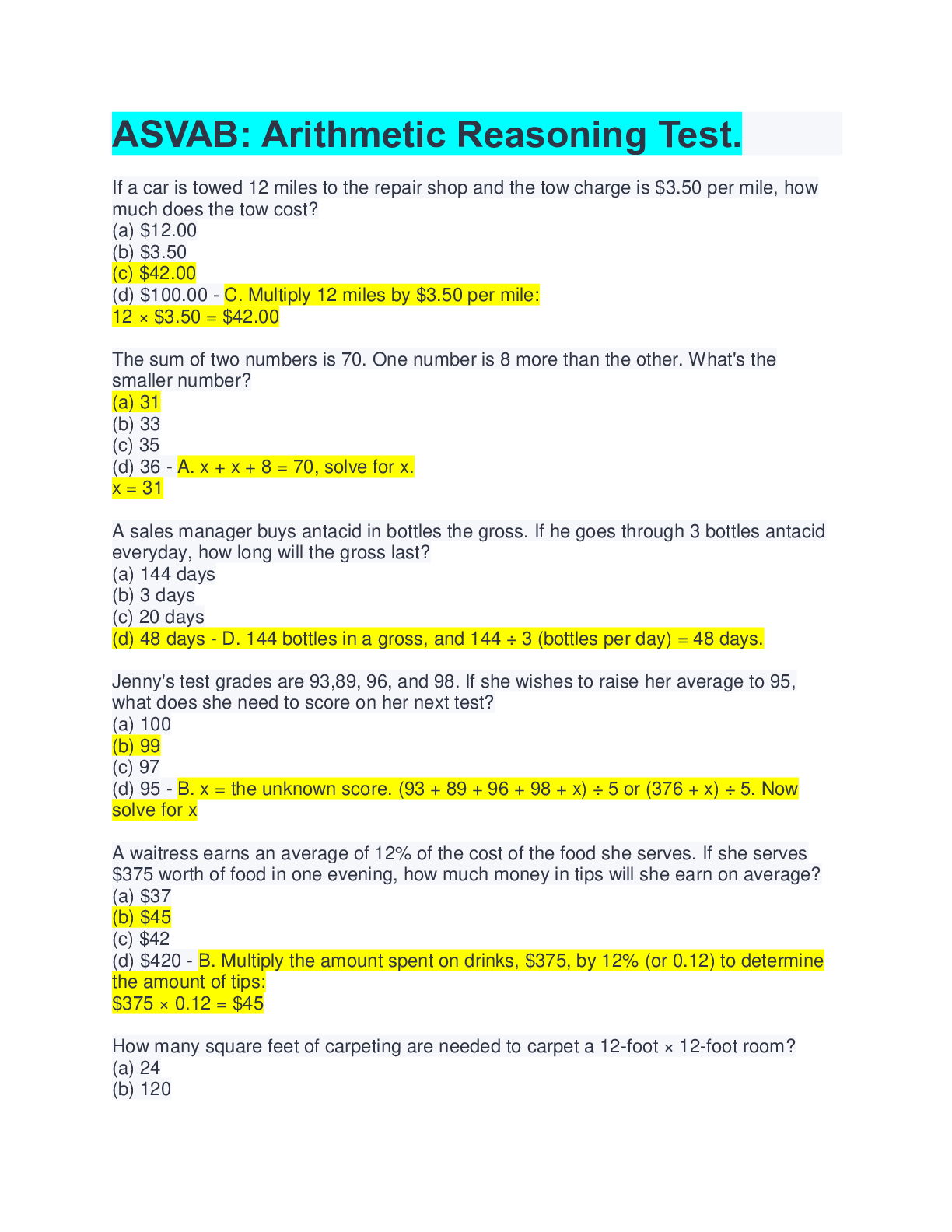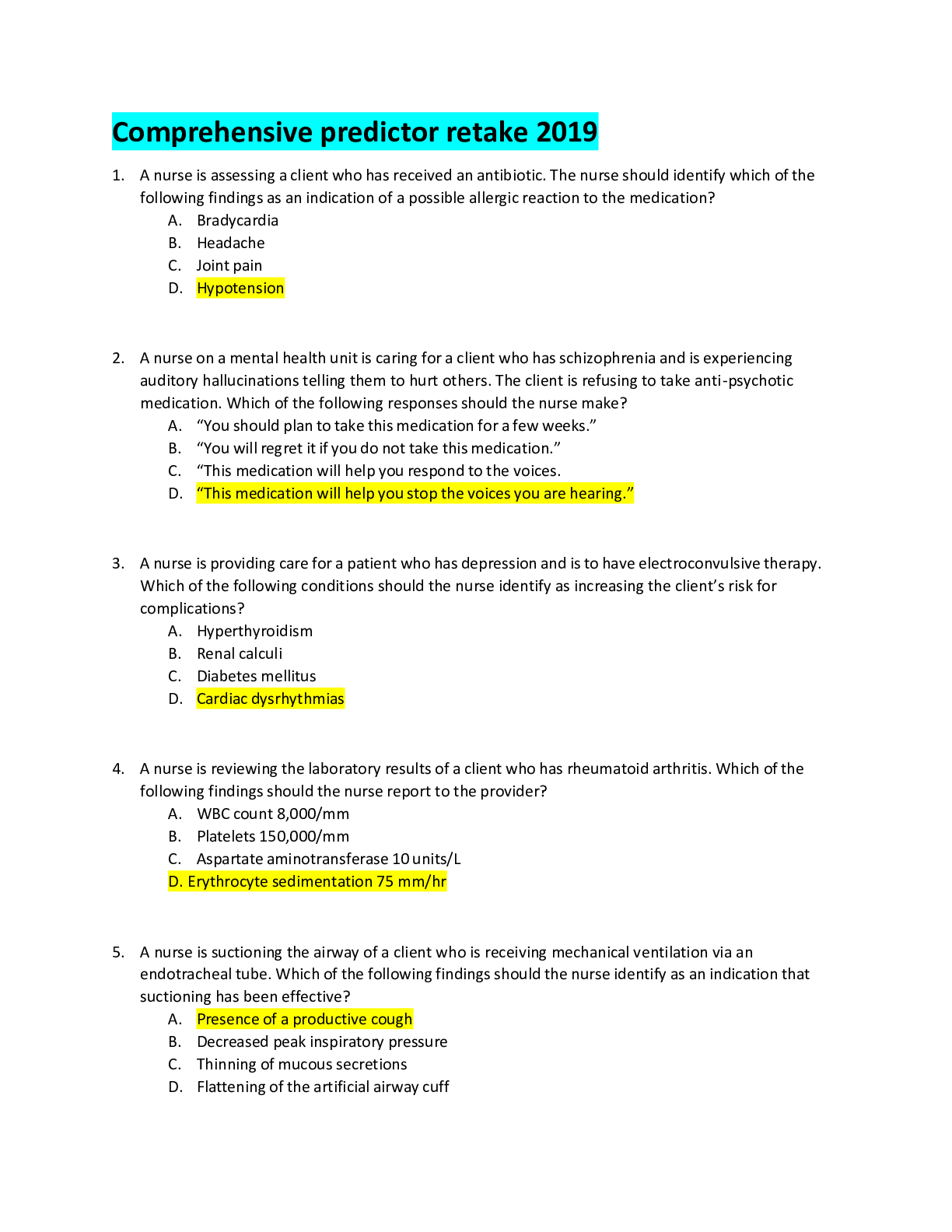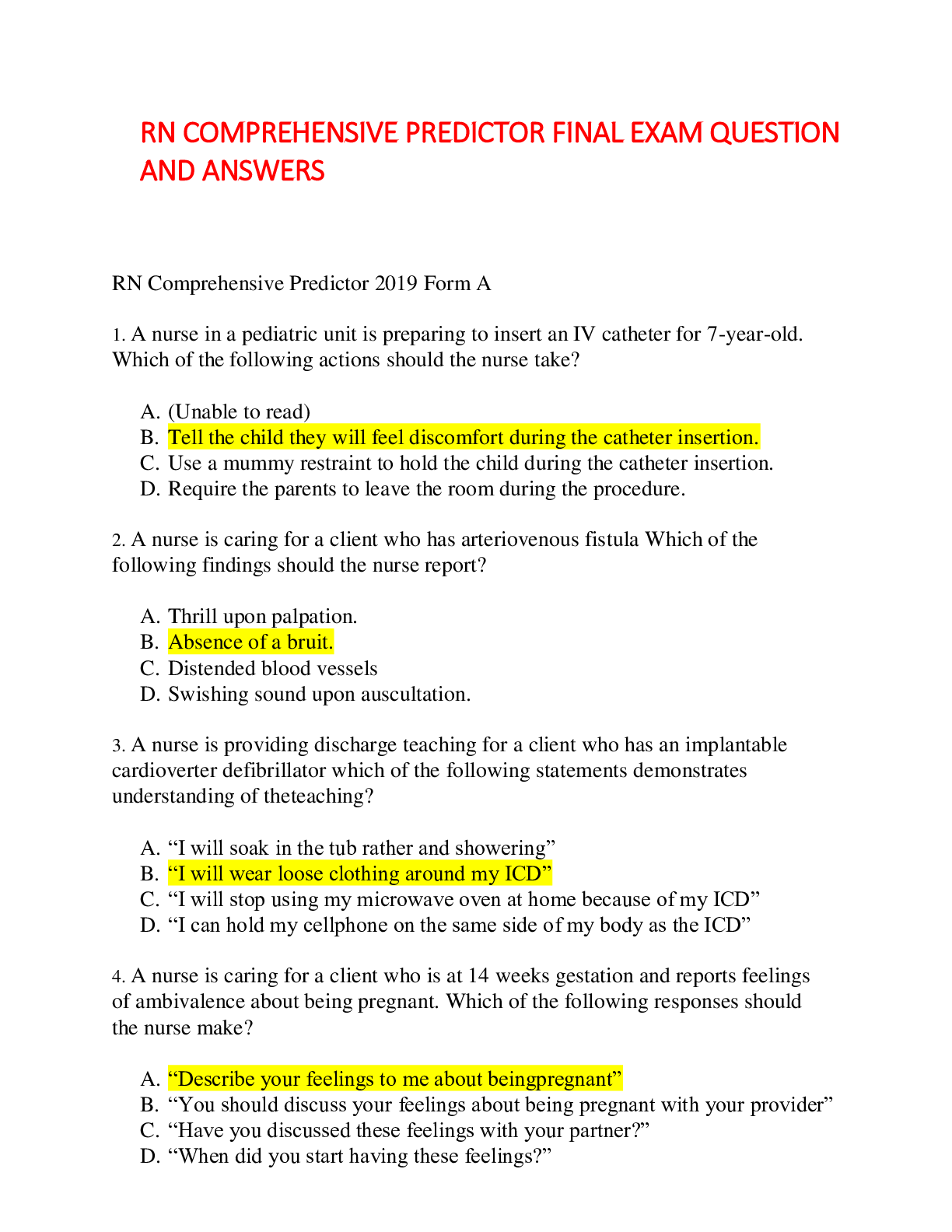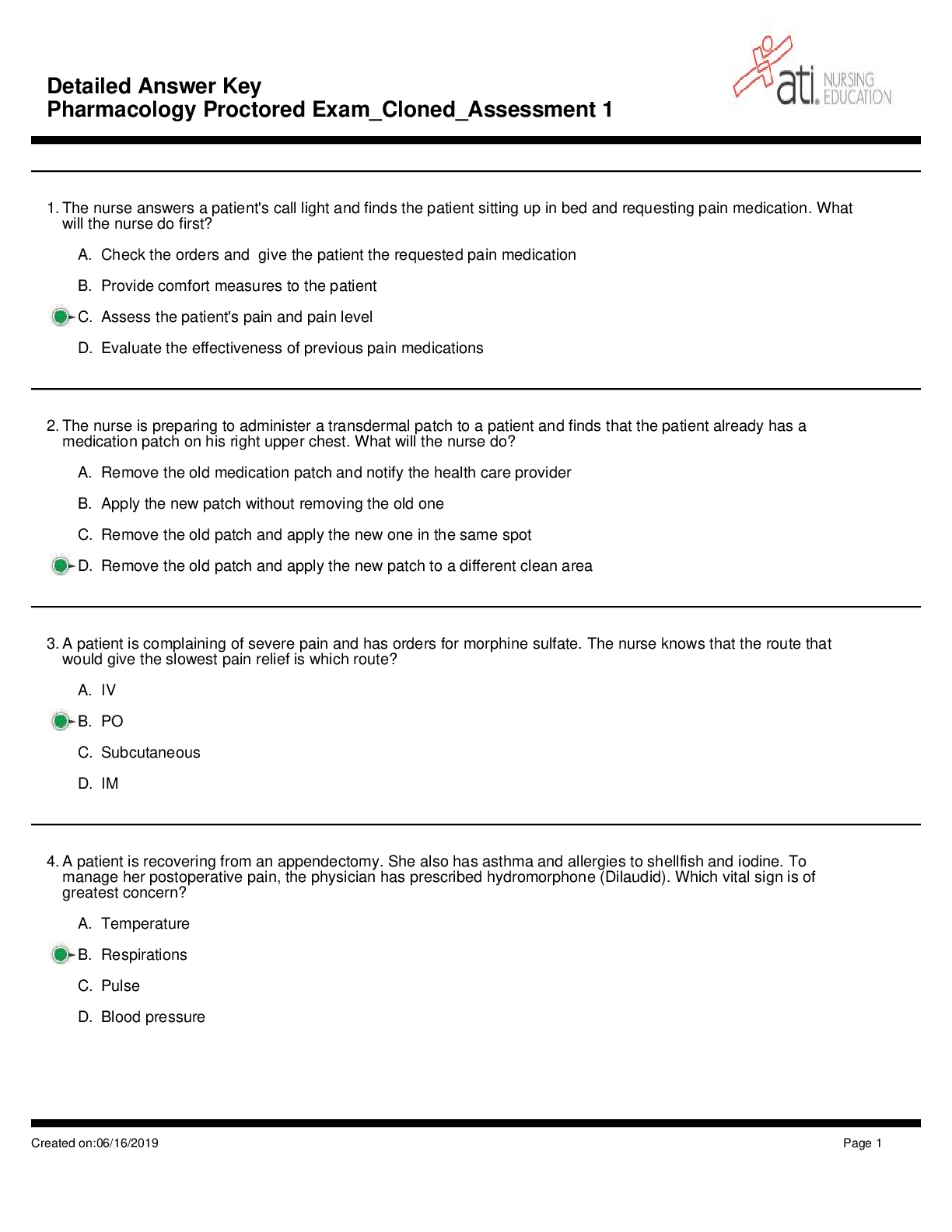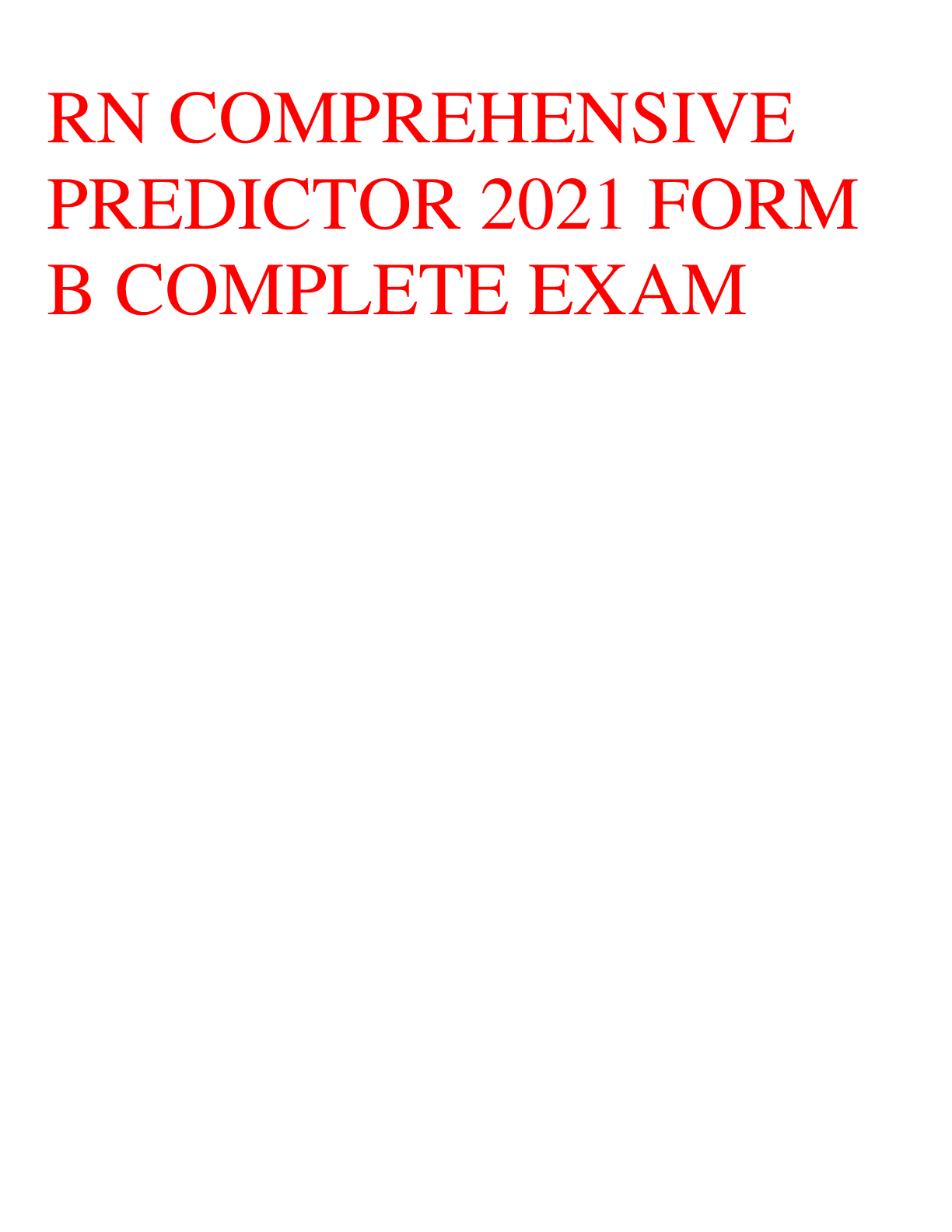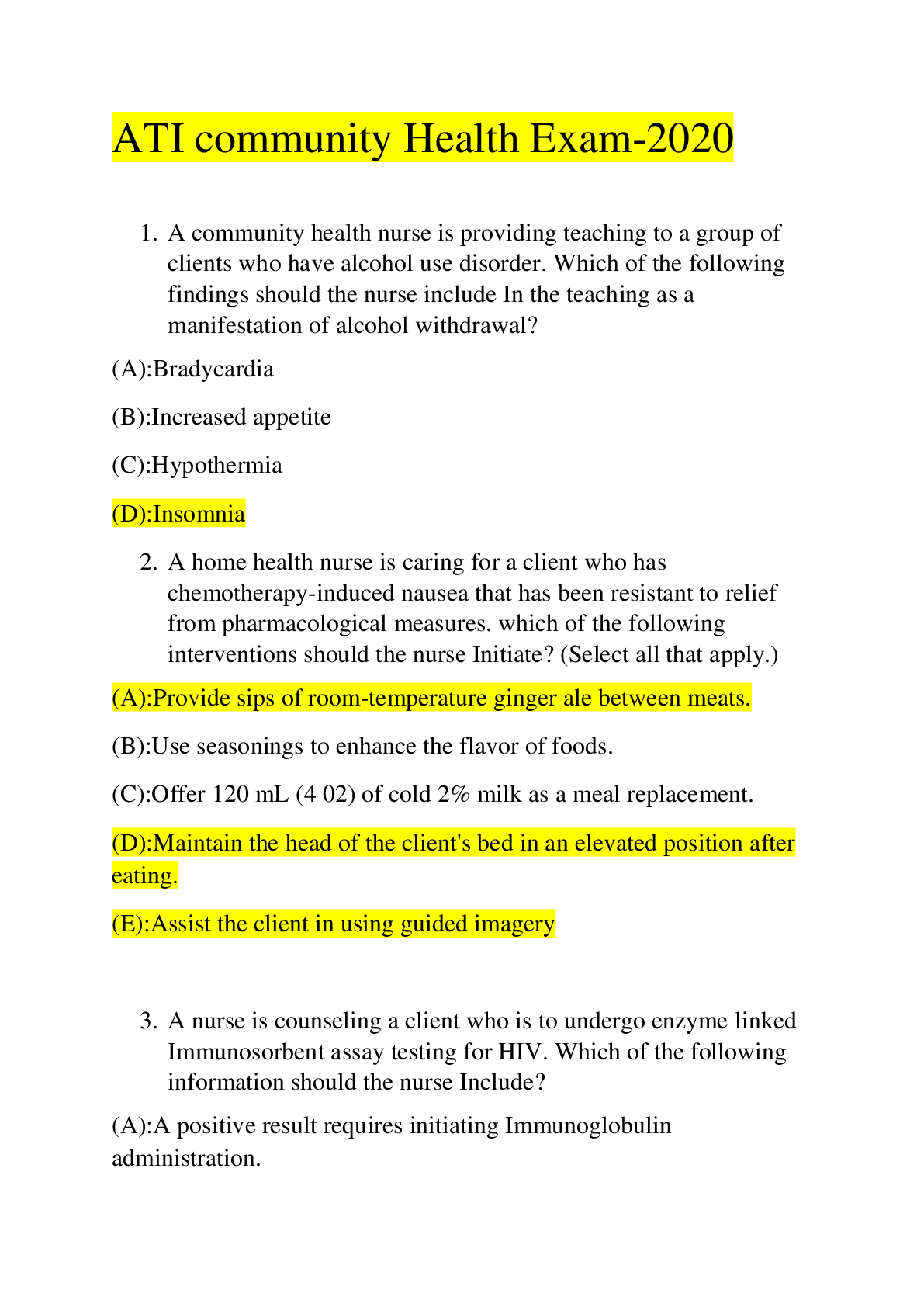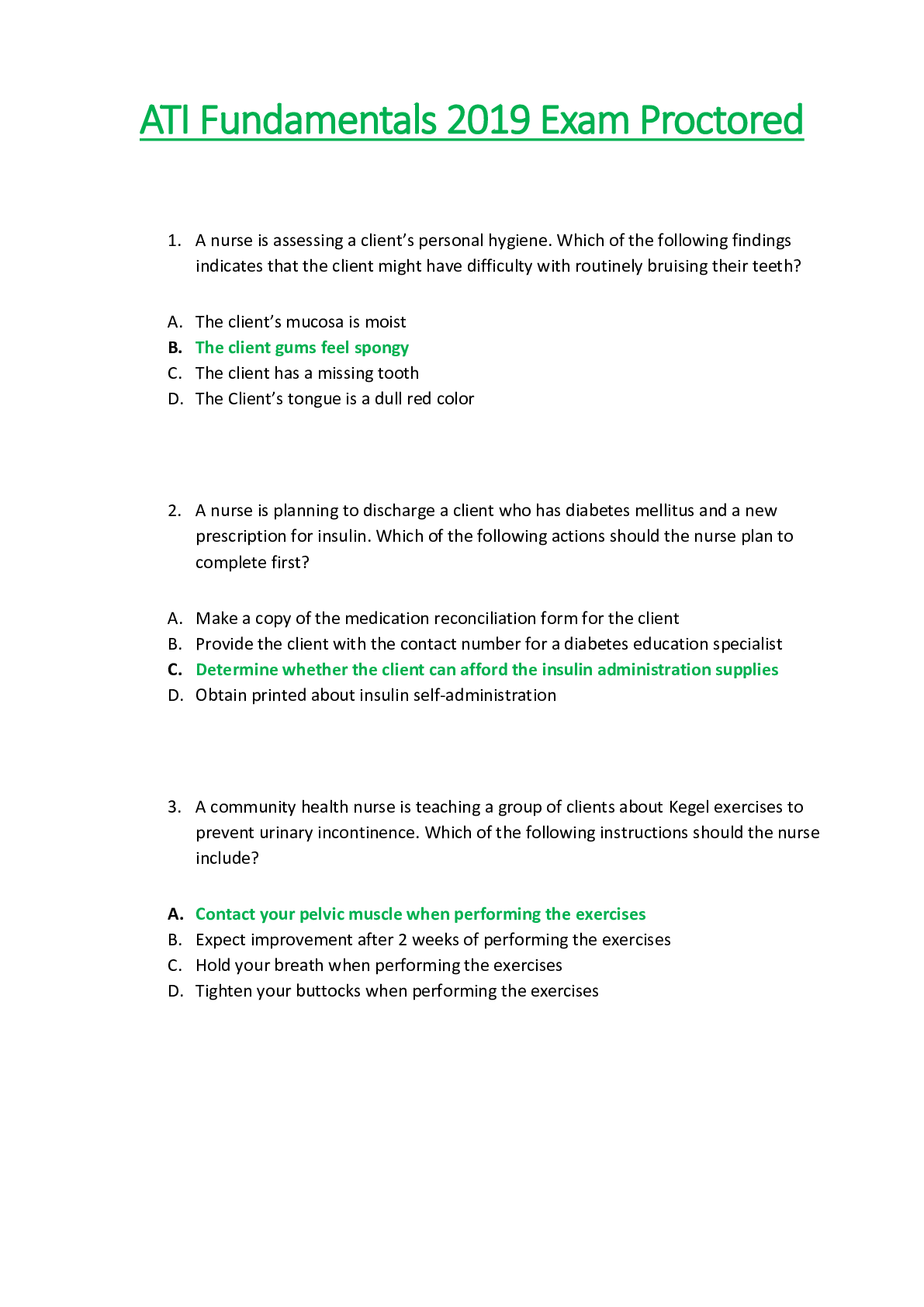*NURSING > EXAM PROCTORED > Virtual_ATI_Fundamentals_2019_Graded A | NURS 220 Virtual_ATI_Fundamentals_2019 (All)
Virtual_ATI_Fundamentals_2019_Graded A | NURS 220 Virtual_ATI_Fundamentals_2019
Document Content and Description Below
Virtual ATI Fundamentals 2019 Questions Rationales 1. A nurse is preparing to assess a client’s cardiac function by auscultating heart sounds at the cardiac landmarks. Which of the following are... as should the nurse identify as the pulmonic area? (Select only the hot spot that corresponds to your answer.) a. A b. B c. Cd. D a; incorrect. Nurse should identify this area as the mitral area of cardiac landmarks, considered the point of maximal impulse. Also the area which apical heart rate is best auscultated, located in the 5th intercostal space, to the left of the sternum, at the left midclavicular line. b; incorrect. This area is the tricuspid area, located at the left 4th or 5th intercostal space, near the sternum. c; correct. This area is the pulmonic area, located at left 2nd intercostal space, near the sternum. d; incorrect. This area is the aortic area, located in the right 2nd intercostal space, near the sternum. 2. A nurse is applying a new transdermal patch to a client. Which of the following actions should the nurse take? a.Wear gloves when applying the patch. b.Apply the patch to the client’s right or left forearm. c.After applying a new patch, dispose of the old one in a waste container with a lid. d.When replacing the patch, cut the old one in half before disposing of it. a; correct. Nurse should apply the patch while wearing clean gloves to prevent transfer of the medication through the skin. b; incorrect. Nurse should not apply patch to distal areas of the body, such as forearms. Nurse should apply patch to areas that do not move frequently such as lower abdomen or buttocks. c; incorrect. When applying a new patch, nurse should fold the adhesive side of the old patch together and dispose of it in a childproof container. d; incorrect. When replacing the patch, nurse should fold the adhesive side of the old patch together and dispose of it in a childproof container. 3. A home health nurse is making an initial assessment visit to an older adult client who has type 1 diabetes mellitus. Which of the following statements should the nurse make to evaluate the client’s ability to measure blood glucose accurately? a.“Please use your glucometer and show me the results.” a; correct. Asking for a return demonstration is an effective way to assess a client’s ability to complete a psychomotor activity. The nurse should carefully observe the client using the glucometer to validate the client’s understanding of the procedure and evaluate whether or not the method is accurate. b. “Please tell me how long you have been using this glucometer.” c. “These blood glucose results you’ve written down do not seem correct.” d. “Let me show you how to use this glucometer, so you can see if this is how you’ve been using it.” b; incorrect. This statement does not provide information to the nurse about the client’s ability to perform the skill accurately. The client might have been using the device incorrectly, no matter how long they have been using it. c; incorrect. Confrontation is a technique the nurse should use sparingly and only after establishing trust. This type of statement placed the client on the defensive. The problem could be actual fluctuations in blood glucose, a faulty glucometer, or faulty technique. d; incorrect. Showing the client how to use the device does not provide necessary information about the client’s ability to perform the skill accurately. The nurse should ask the client to demonstrate the skill to ensure it is being performed correctly. 4. A nurse is caring for a client who has an ankle sprain and a prescription for an aquathermia pad. Which of the following actions should the nurse take? a. Cover the pad with a pillowcase before application. b. Apply the pad for 45 min per application. c. Set the temperature of the aquathermia pad to 50C (122F). d. Use safety pins to hold the pad in place. a; correct. Nurse should cover the aquathermia pad with a thin towel or pillowcase before use because applying the pad directly to the skin could cause a burn injury. b; incorrect. Application of aquathermia pad usually lasts 30 min. Prolonged application of pad paces client at risk for a burn injury. c; incorrect. Nurse should set the temperature of aquathermia pad to 40C (104F). d; incorrect. Nurse should not use pins to hold the aquathermia pad in place because they can cause a leak. Nurse should use tape or gauze ties to hold the pad in place. 5. A nurse is preparing to administer diazepam 2 mg twice daily via NG tube. Available is diazepam oral solution 5 mg/1 mL. How many mL should the nurse administer with each dose? (Round the answer to the nearest tenth. Use a leading zero if it applies. Do not use trailing zero.) mL 0.4 mL 6. A nurse is caring for a client who is pulling at their abdominal wound drains. The provider prescribes wrist restraints for the client’s safety. To which of the following parts of the bed should a; incorrect. Attaching wrist restraints to the head of the bed is not an acceptable action by the nurse because it can injure the client. the nurse secure the restraints? a. Head of the bed b. Moveable portion of the bed frame c. Foot of the bed d. Side rails closest to the restraints b; correct. Attaching the wrist restraints to the moveable portion of the bed frame allows the head of the bed to be raised or lowered without causing injury to the client. c; incorrect. Attaching wrist restraints to the foot of the bed is not an acceptable action by the nurse because it can injure the client. d; incorrect. Attaching wrist restraints to the side rails is not an acceptable action by the nurse because it can inure the client when the rails are lowered. 7. A nurse in a long-term care facility is planning to use therapeutic touch for a group of selected clients who have chronic pain. The nurse should identify that the use of therapeutic touch is contraindicated for which of the following clients? a. A client who has chronic back pain and a history of physical maltreatment. b. A client who has chronic joint discomfort and a history of mild dementia. c. A client who has chronic knee pain and a history of grand mal seizures. d. A client who has chronic hip pain and a history of uterine cancer. a; correct. Therapeutic touch consists of using the nurse’s hands to harmonize energy fields and to facilitate relief of pain or anxiety, such as for a client who has chronic back pain. The nurse can touch the client with their palms or move the palms near, but not touching the client’s body. Prior physical maltreatment and some mental health disorders are a contraindications for therapeutic touch, because touch or near touch could cause severe anxiety. b; incorrect. Therapeutic touch can provide comfort for clients who have chronic pain. It can also be a comforting therapy for clients who have dementia. Nurse should assess each client individually before using complementary therapies, such as therapeutic touch. c; incorrect. The presence of a seizure disorder is not a contraindication for the use of therapeutic touch. The nurse should assess each client individually before using complementary therapies, such as therapeutic touch. d; incorrect. The presence of cancer or a history of it is not a contraindication for the use of therapeutic touch. The nurse should assess each client individually before using complementary therapies, such as therapeutic touch. 8. A nurse is preparing to transfer a client who weighs 136 kg (300 lb) from a bed to a stretcher with the aid of an assistive personnel (AP). Which of the following actions should the nurse take? a. Move the client using a slider board. b. Use an air-assisted transfer device to a; incorrect. Using a slider board to transfer a client who weighs 136 (300 lb) places the client and nurse at risk for injury. A slider board is used to transfer clients who weigh less than 90 kg (200 lb), are postoperative, or have experienced hemiparesis or amputation of a lower extremity. [Show More]
Last updated: 1 year ago
Preview 1 out of 37 pages
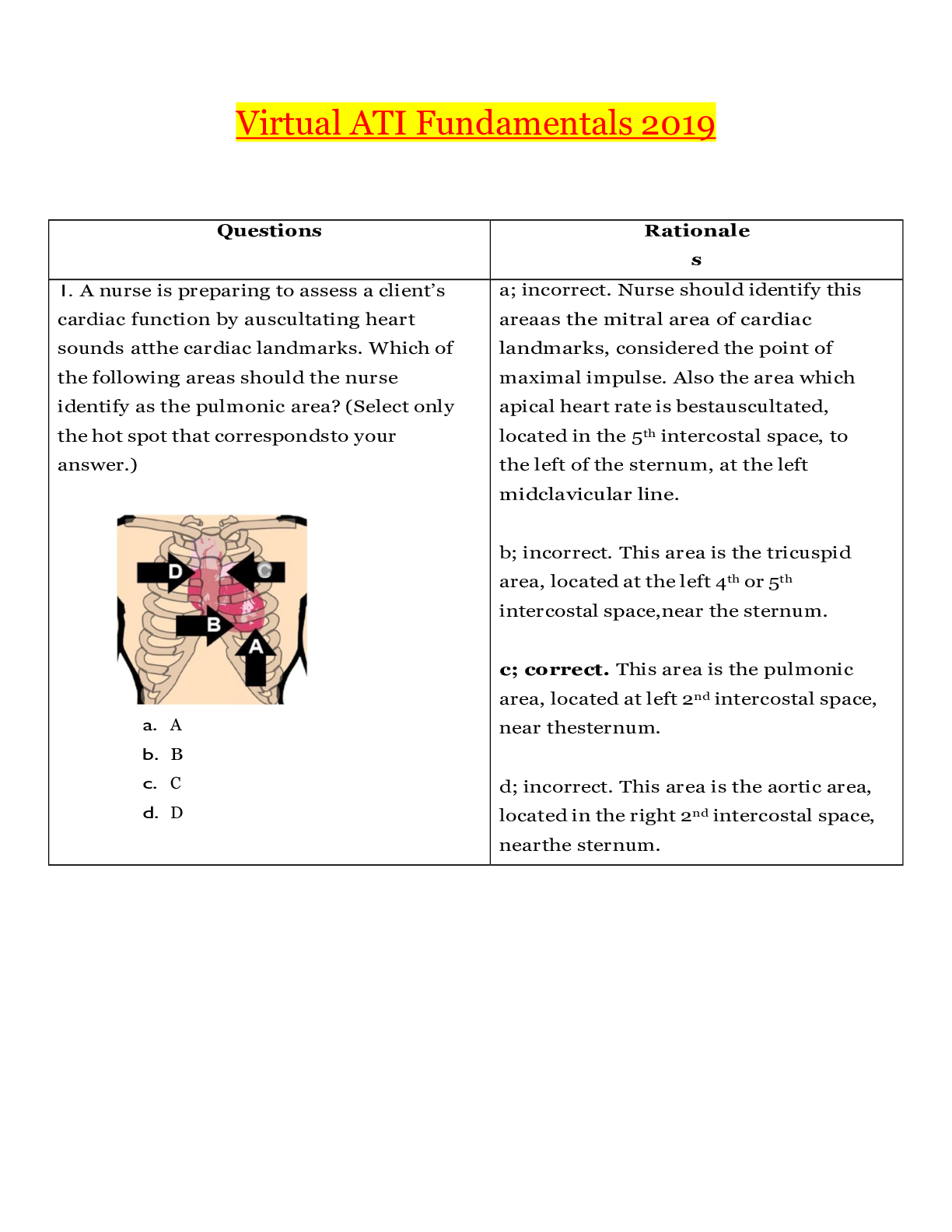
Reviews( 0 )
Document information
Connected school, study & course
About the document
Uploaded On
Mar 23, 2021
Number of pages
37
Written in
Additional information
This document has been written for:
Uploaded
Mar 23, 2021
Downloads
0
Views
58

